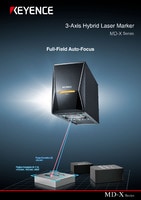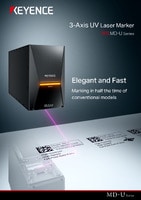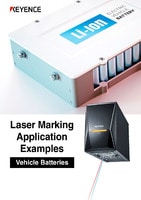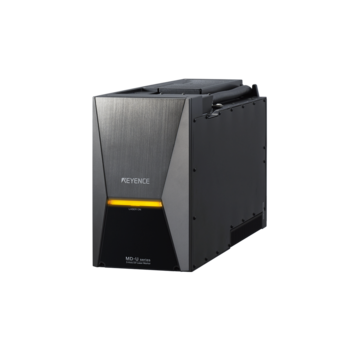Industrial Laser Marking Systems / Laser Markers
Difference Between Laser Cleaning & Plasma Cleaning
-
Tags:
- Laser Cleaning , Laser Ablation , Laser Oxide Removal
When it comes to industrial cleaning processes, laser vs plasma cleaning are both effective methods for removing contaminants from a variety of surfaces. Both techniques are used for different applications, and both have their unique advantages. In the following, we'll explore the main differences between the two, how they work, and the advantages and disadvantages of each.
How Does Plasma Cleaning Work?
The plasma cleaning process uses an ionisation gas to efficiently clean metal surfaces, often to remove contaminants such as rust, paint, oxide, and coatings. It can be performed manually or automatically using an automated gun and is an excellent alternative to chemical and abrasive blasting techniques.
A plasma cleaner utilises vibrating ions that vibrate and scrub the surface of your product, creating micro-sandblast effects to safely remove even stubborn dirt or oxide layers from its surface. This makes plasma cleaners an effective means of prepping surfaces for future processes like adhesive bonding, paint coating, and other manufacturing methods.
This process can not only remove contamination from surfaces but also roughen them down to an atomic level. This enables other chemicals to more easily attach themselves to them and accelerates production processes.
Plasma's UV energy works to break many organic bonds on surface contaminants, leading them to volatilise and vanish into thin air. In addition, the plasma medium's ionised ozone and free electrons react with organic contaminants by breaking them down into lower molecular weight compounds easily blown off or suctioned away from surfaces.

Contact us to learn more about how our advanced technology can help take your business to the next level.
Contact Us
How Does Laser Cleaning Work?
Oxygen, essential to life, gives us energy, sparks fires, and fuels plant growth. However, it also breaks down and corrodes metal surfaces, leading to corrosion that eventually forms rust on aircraft, heavy machinery, and other surfaces. While media blasting may be used as an effective solution for removal, laser cleaning is another viable alternative that may prove more efficient in certain instances.
Laser cleaning works by harnessing light's power to vaporise any coatings or materials contaminating a substrate and removes any contamination without harming its base product. This process enables users to effectively eliminate everything from rust to paint contamination.
Laser cleaners feature mirrors inside their heads that rotate to direct laser light into a small, focused beam. You can adjust these mirrors' speed of movement and the parameters of their laser to customise its strength or width so you can target a specific part of an object you are cleaning.
Laser cleaning is an extremely quick and precise process and is completely safe for the product, as well as any nearby people, as long as the proper precautions are followed.

Curious about our pricing?
Click here to find out more.

The Advantages and Disadvantages of Plasma Cleaning
Plasma cleaning is an efficient, quick, easy, and safe method to quickly clean surfaces. Removing the need for liquid chemicals altogether makes plasma an excellent way to pre-treat surfaces prior to bonding or welding processes. Power, treatment speed, gas type, and processing time can all be precisely managed for maximum precision in treating only those areas which require specific cleanliness. Because of this, plasma is often an ideal alternative to grinding and chemical washing treatments.
Plasma treatment works by carbonising surface pollutants. This technique can effectively remove organic contaminants that pose risks in subsequent production steps, such as adhesion or seal coatings. It also has the capacity to eliminate corrosion-based impurities like oxides and rust deposits from metals and ceramics.
Plasma cleaning can do more than simply eliminate pollutants—it can also improve the reliability of surfaces. This is particularly applicable when wire bonding occurs on such surfaces. Plasma can even help battery manufacturers by eliminating contamination on lead frames and dies, which will further strengthen wire bond strength for increased yield and shelf life.
Although plasma cleaning has its advantages, there are a few disadvantages to consider. For one, the layer of contaminants that are added may be corrosive. Over time, this can cause degradation and wear. Plasma cleaning often requires additional equipment to finish the job, adding additional expenses to the process.
We’re here to provide you with more details.
Reach out today!

The Advantages and Disadvantages of Laser Cleaning
Laser cleaning is faster and more cost-effective than chemical or abrasive methods of cleaning without damaging substrates in the process. Additionally, its precision allows greater control of material removed from surfaces than blasting technologies. It also produces no dust that requires cleanup or safety precautions after completion of cleaning operations.
Lasers are far more robust in their structure and can be used both to penetrate deeply into substrates, or to simply work at the surface level to vaporise and remove contaminants without harming the integrity of the underlying substrate. This helps prevent issues and potential surface damage. Also, using a laser removes the need for additional materials like chemicals or abrasives, which produce dangerous fumes or waste that needs disposing of afterward.
Laser cleaning can also be safer for your employees to use than other cleaning methods, requiring only training, an optical hazard zone, and safety glasses for use. However, laser ablation requires specific skills and custom equipment for optimal results.
The limiting factor for lasers as a cleaning device is that it must have an unimpeded view of the surface it is looking to clean. As a result, it makes some applications difficult to set-up.
Discover more about this product.
Click here to book your demo.

When to Use Laser vs Plasma Cleaning
Choosing between plasma cleaning and laser cleaning depends on the specific cleaning requirements and the nature of the contaminants. Plasma cleaning can provide an efficient way to prepare surfaces for coating or bonding applications and is an ideal alternative to more abrasive methods like dry ice or sandblasting. Both technologies do not require chemical cleaners and produce less debris than their counterparts.
However, laser cleaning may be preferable in certain instances compared to plasma cleaning. If you are dealing with porous or compact contaminations that require deep-cleaning techniques, plasma ablation alone is often not enough. When faced with such scenarios, combining both plasma cleaning and laser ablation techniques together is often required for successful outcomes.
Laser surface cleaning offers additional environmental advantages over chemical etching, sandblasting, and dry ice blasting methods. Laser cleaning does not employ harmful chemicals that need to be disposed of and produces no waste materials that need disposal. This often makes laser cleaning a better choice for many projects.
Laser cleaning equipment is also lightweight and simple to operate compared to bulkier blasting solutions used for other cleaning jobs. This makes laser cleaners much simpler for operators to work with and integrate into automated work cells. Lastly, no special protective gear is needed other than safety glasses and an allocated area in which to operate. If these considerations are important, plasma cleaning may not be a viable option. Since laser ablation methods have improved significantly over recent years, many manufacturers are choosing it over plasma cleaning.
Laser and plasma cleaning can both offer effective solutions for removing contaminants from surfaces. Depending on the applications, budgets, and other factors, choosing between the two often comes down to the considerations discussed above. By understanding these differences, the advantages and disadvantages of each, and how they work can help you select the appropriate technique for your requirements.
Still have questions? Give our knowledgeable team a call today at 1-800-103-0090. We are here to help!
Contact us to learn more about how our advanced technology can help take your business to the next level.
Contact Us





![Laser Marker Trends Application Guide [Electric and Hybrid Vehicles]](/img/asset/AS_106270_L.jpg)


